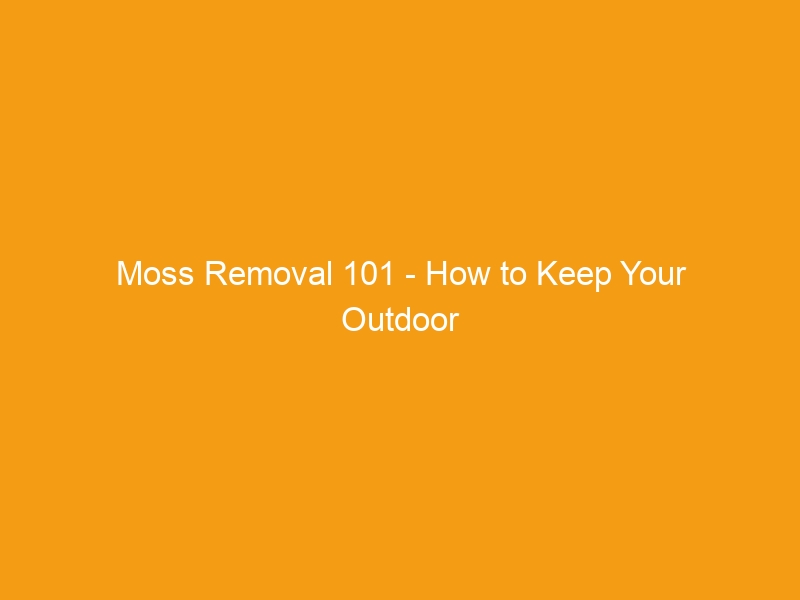Moss is a green interloper that can take over outdoor spaces and rob them of their charm. It also poses safety risks, making surfaces slippery.
Prevention is key. The adage that an ounce of prevention is worth a pound of cure holds regarding preventing moss growth. Algae and moss may harm your roof in two ways: directly and indirectly. They thrive in moist, shady environments. The thick moss growth on your roof can trap water against the roof’s surface, leading to the deterioration of the roofing components, so you should learn why proper moss removal is essential in Victoria.
Keep Your Patio Clean
When you invest time, money, and love into your patio pavers and hardscaping, you want to keep them clean and moss-free. Moss doesn’t just make your outdoor spaces look unsightly and can pose a safety risk because it makes surfaces slippery.
You can use bleach on your patio to remove moss, but be sure to wear a mask and scrub the area well. Bleach is harsh, and it can kill nearby plants as well.
Don’t Let Debris Build Up
One of the simplest ways to keep moss away from concrete and stone surfaces is to expose it to sunlight. It may seem counterintuitive, but letting the sun hit the surface of the pavement or sidewalk is the best way to stop moss from growing in the first place.
Other physical ways of removing moss include manual scraping with a scraper or brush and pressure washing. The latter option is an effective chemical-free method, but washing large areas requires time and a lot of water.
You can also use bleach to remove moss, but wear gloves and avoid getting it on any desirable plants or other surfaces. You can mix it with a bit of water in a spray bottle, or you can use a pump-up garden sprayer.
Keep Your Plants Moisturized
Unwanted moss can make your pavers, walkways, and patios unkempt and can be a tripping or slipping hazard. It can also reduce the beauty of your landscape, but there are several ways to keep unwanted moss at bay.
Mosses are non-vascular plants that cling to surfaces and absorb moisture. They are most common in shady, damp areas without direct sunlight.
One of the best moss removal methods is to pour boiling water over the affected area. The heat kills the moss and removes its moisture, so it’s best to do this as soon as you notice any growth. Another option is using a chlorine bleach solution or another moss-removal cleaner safe for outdoor plants. Apply the cleaner with a scrub brush and let it soak into the moss for about an hour before scrubbing it away.
Don’t Overwater
Moss grows easily in shaded areas and requires a certain amount of moisture to survive. Over time, it can cause serious damage to the surface of your roof and other outdoor surfaces, making them slick and dangerous.
The best way to avoid this is to keep your area well-maintained. Avoid letting dirt, leaves, or debris build-up, and sweep it regularly. Repair any low or leaking areas, especially those that remain wet for long periods. Moss also grows in the spaces between pavers, so remove it as soon as you see it growing. Otherwise, it can become established in the joint sand and be difficult to remove. Zinc stripes, which are very effective against moss, can be added to your patio to prevent it from growing in these spots.
Don’t Allow Moisture to Build Up
Moss grows in shady, damp areas where sunlight cannot reach. Suppose you can create unfavorable growing conditions for moss, such as removing debris, pruning overhanging trees and shrubs, or installing a rain garden to improve drainage. In that case, you can prevent moss growth before it starts.
If moss does start to grow, some products can be used to remove it. Typically, these contain chemicals such as bleach, sodium pentachlorophenate, or ammonium sulfate, which can harm the surrounding environment and are best used cautiously.
A safer and more natural option is to sprinkle the area with baking soda. The baking soda will absorb and kill the moss, leaving a white residue on your pavers that you must scrub off.

